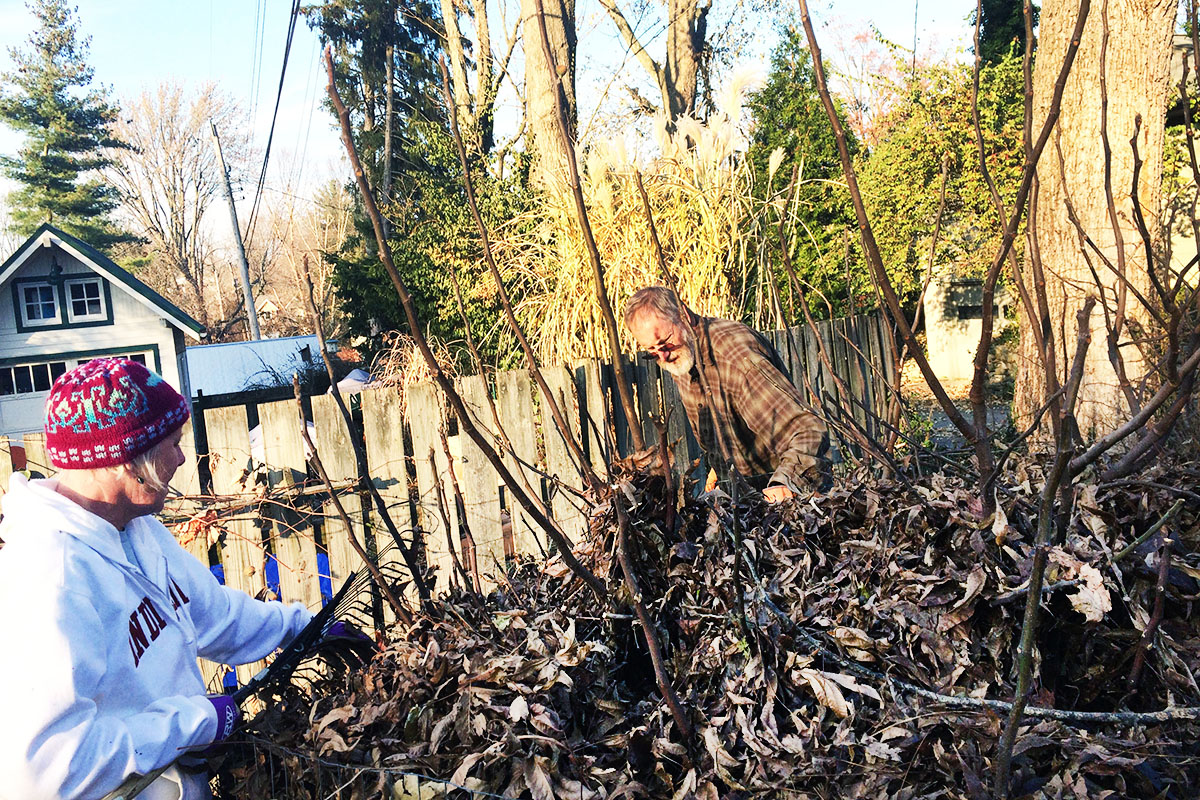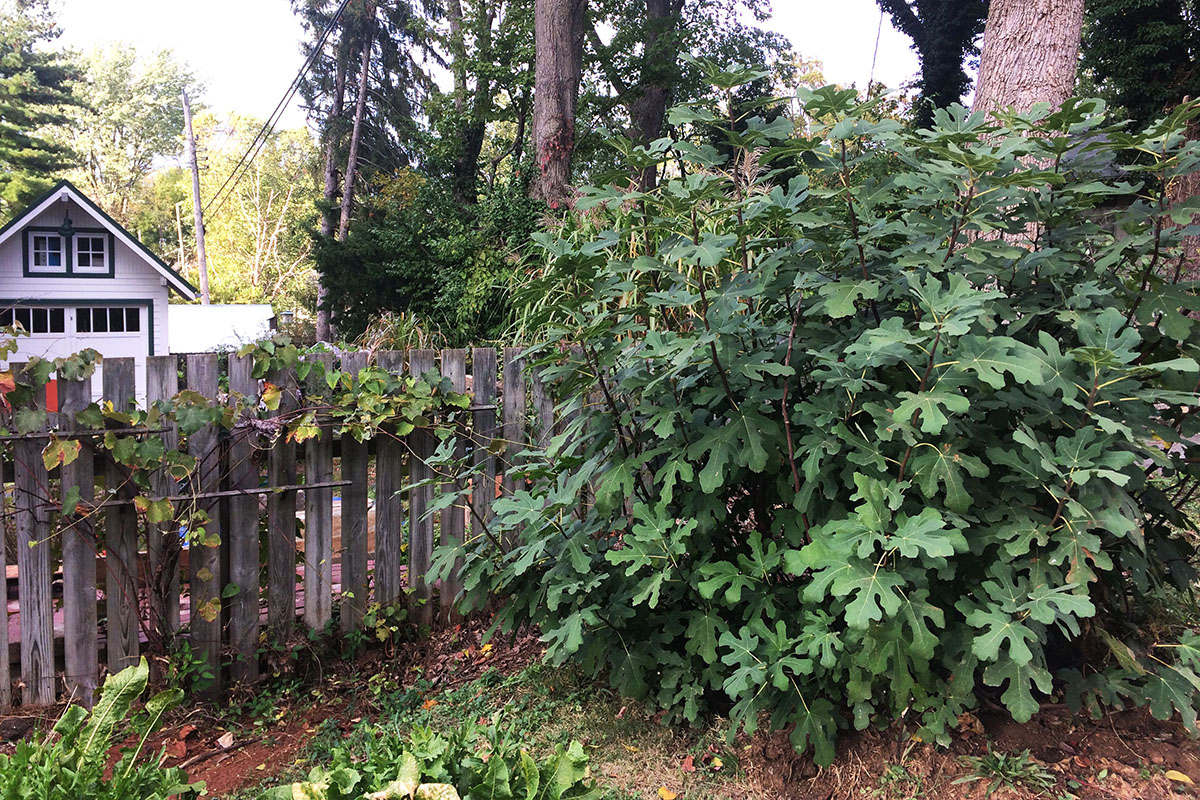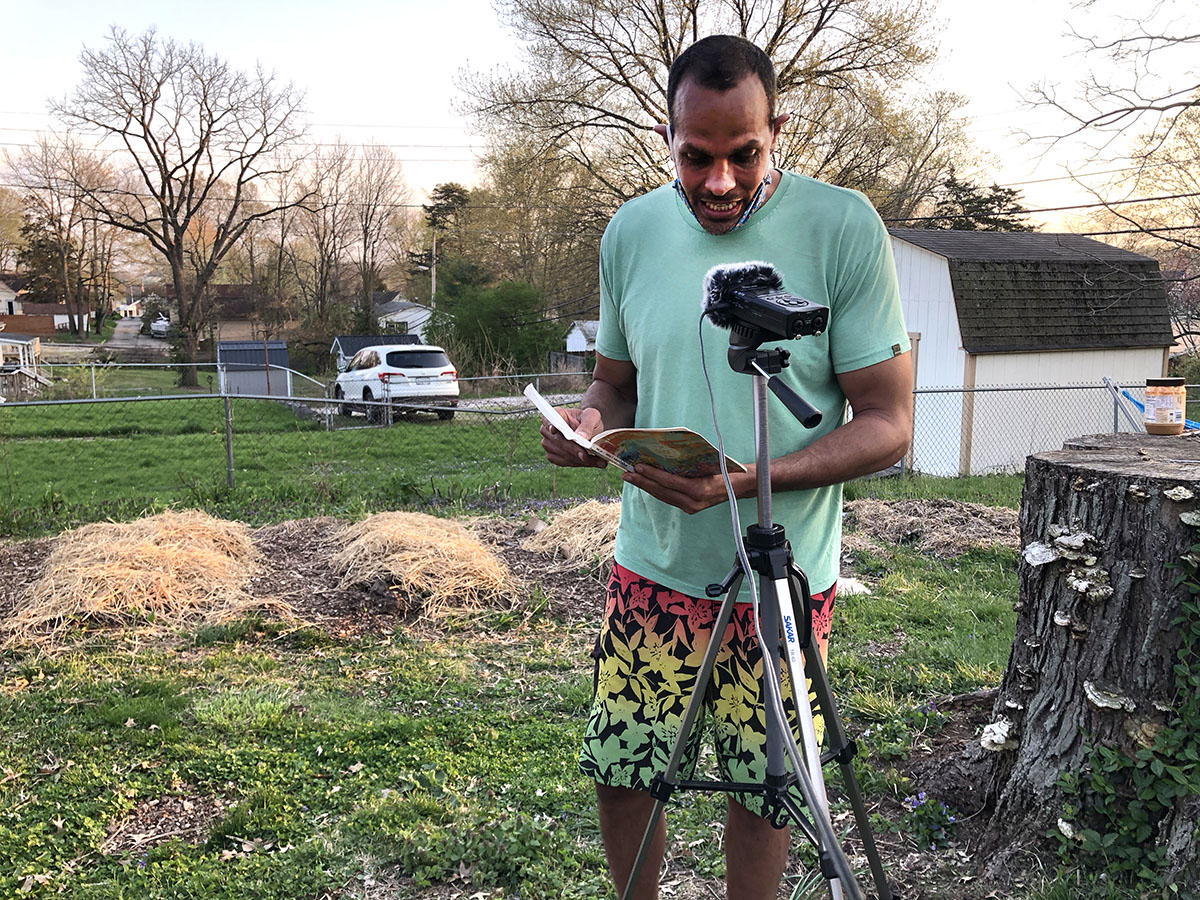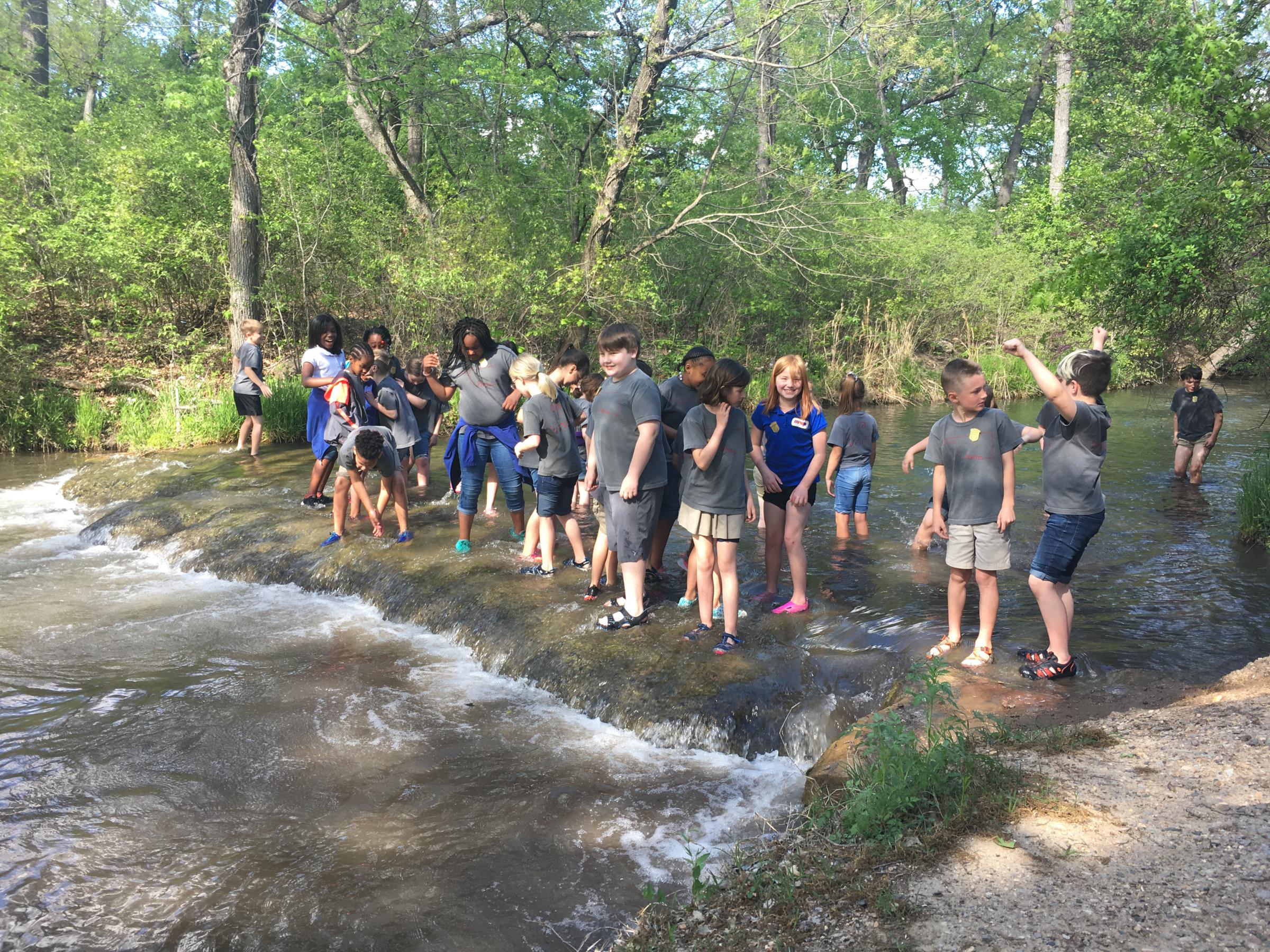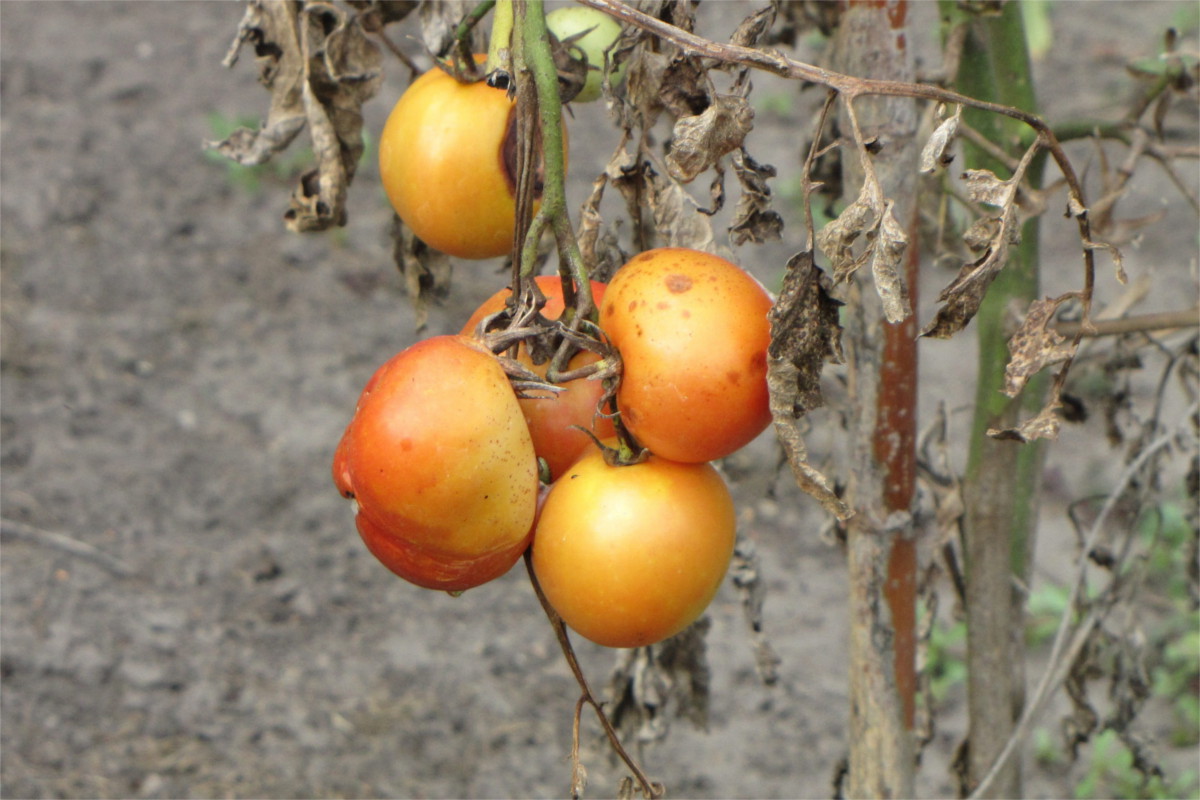KAYTE YOUNG: Production support for Earth Eats comes from Bill Brown at Griffy Creek Studio, architectural design and consulting for residential, commercial and community projects. Sustainable, energy positive and resilient design for a rapidly changing world. Bill at GriffyCreek dot studio and insurance agent Dan Williamson of Bill Resch Insurance. Offering comprehensive home, auto, business, and life coverage, in affiliation with Pekin Insurance. Beyond the expected. More at BillReschInsurance.com
[Earth Eats Theme Music]
KAYTE YOUNG: From WFIU in Bloomington Indiana, I'm Kayte Young, and this is Earth Eats.
ROSS GAY: Which everyone knows cannot grow this far north being Mediterranean and neighboring the rocky sunbaked soils of Jordan and Sicily. But no one told the fig tree.
KAYTE YOUNG: This week on our show - fig trees, Ross Gay shares a poem featuring the opposite of social distancing under a fig tree in Philly, and Bloomington neighbors share tips on raising figs here in the Midwest. That's all coming up, so stay with us.
Renee Reed is with us... in a way. She's at home, and so am I. But... hey Renee, how's it going?
RENEE REED: Hi Kayte, we're hanging in there. While the COVID-19 pandemic continues the federal government is moving forward with suspending and rolling back food and agriculture regulations. Experts say this could have long term impacts on the country's food system. As the agencies' put rules on hold, rules meant to prevent food borne illnesses and industrial pollution, experts worry that some companies may take advantage of the lull and do less to protect public health and the environment. In mid-March the Food and Drug Administration announced that it would temporarily suspend routine facility inspections, even though prior to the suspension the agency would only visit a site once every 5 to 7 years. The inspection suspension comes as many are sounding the alarm about the shortage of personal protective equipment or PPE for food workers across the country, putting the food supply at higher risk of exposure to COVID-19 contamination. The Environmental Protection Agency also announced that it would suspend all enforcement of environmental laws during the coronavirus outbreak. This includes the clean water act and the clean air act which regulates the waste from concentrated animal feeding operations, also known as CAFOs. CAFOs will also benefit from a proposed overall of the national Environmental Policy Act, which states the USDA's farm Service Agency would no longer require an environmental review prior to the review of long guarantees for large CAFO operations. Farmers and food systems are reeling from work shortages and gaps in the supply chain as people around the world cloister in isolation. The U.S. food system has shown signs of collapse as processing plants close their doors and farmers are stuck with billions of dollars’ worth of unusable product. In Wisconsin Dairy Farmers have been forced to flush milk down drains. About a 3rd of the state's dairy products, mostly in the form of cheese, are sold in the shuttered food service industry. In Florida, winter crops sold to restaurants have been left to rot due to lack of buyers. The national fallout could amount to over 1 billion dollars from March to May according to a National Sustainable Agriculture Coalition report. U.S. farmers rely on hundreds of thousands of Mexican workers who get visas to work seasonal harvest. But consulates in Mexico have been shut down. Labor intensive crops like strawberries and tree fruits are among the hardest hit by shortages of workers.
Farm workers who harvest crops during the pandemic face huge risk working in jobs with few protections or opportunities for social distancing. European crops like asparagus in Germany, strawberries in France, and tomatoes in Italy depend on workers from countries like Poland, Romania, and Bulgaria. But stricter borders are limiting movement and many workers are choosing not to travel to take risk down. India's food system started unraveling in March, as a national three-week lockdown took delivery trucks off the road, and scuttled demand. The shutdown left the country's peak harvest season suspended with bumper crops from last year's monsoon rotting on the vine. The country will depend on its abundant stockpile of stable foods and a $22 billion package to pay for rations for 800 million people. For Earth Eats News I'm Renee Reed. Thanks to Tailor Killough and Chad Bouchard for those stories.
[Earth Eats News Theme Plays Out]
KAYTE YOUNG: The Harvest Public Media Reporting Collective is producing a series of reports on the effects of climate change on the great plains. Part five in their series centers on Oklahoma. Chickasaw and Choctaw nations are working with additional partners to prepare for possible drought conditions in the future. For Harvest Public Media, Lindzey Krehbiel-Burton reports.
LENZY KREHBIEL-BURTON: [Narrating] Southeastern Oklahoma averages at least 40 inches of rain per year, so its agriculture industry focuses primarily on livestock and timber. But an extended drought in 2011 and 2012 cost Oklahoma's farmers and ranchers more than 2 billion dollars in losses statewide. The citizen of the Choctaw nation, Billy Smallwood is a 5th generation rancher and hay baler in Pushmataha County. He says that year he made almost no hay.
BILLY SMALLWOOD: You know hay balers don't like to buy hay but we had to buy hay.
LENZY KREHBIEL-BURTON: [Narrating] Smallwood says farmers and ranchers know they can't control the weather, but that doesn't make it easy to get through the tough times. And there wasn't much he could do about it.
BILLY SMALLWOOD: It doesn’t matter how many acres you got, when the good lord don't rain on you, well you can't produce. And so, you just... you just have to make judgements and try to get the most out of what you got.
LENZY KREHBIEL-BURTON: [Narrating] But anticipating the next drought could keep things from getting too bad. That's been the focus of a collaborative effort to create a drought mitigation plan. Kara Berst is the undersecretary of outreach and services for the Chickasaw nations Department of Commerce.
KARA BERST: So, in Oklahoma we're used to droughts. Our agriculture folks depend on water for their industry, and so we're kind of used to knowing that there will be impacts here in our state.
LENZY KREHBIEL-BURTON: [Narrating] The Chickasaw nation, Chickasaw nation, area cities, state and federal agencies, and nonprofits began developing a drought mitigation plan in 2015 for the Arbuckle Simpson aquifer. That's the primary source of water for about a 150,000 people across southeastern Oklahoma. For some communities, it is the only potable water source. Berst says maintaining it and executing any drought plan will require everyone's participation.
KARA BERST: We try to reach out and get the most input that we could because we do believe that that's the best way to get an effective plan. And if we just sit in the room by ourselves and put something on paper, then when we take it out to the real world it may not actually work.
LENZY KREHBIEL-BURTON: [Narrating] They came up with a multi-step plan based on levels of alerts. Five specific triggers can prompt an alert for water conserving action. The water level at Arbuckle lake, the aquifer level at a U.S. Geological Survey Monitoring Well, the flow from Antelope springs, the Blue River stream flow, and the Palmer Drought Severity Index. The number of triggers set off for any one month's data determines the response level. For example, if just one is tripped, then it is considered an alert. Area farmers would be asked to reduce their potable water use by one fourth.
KARA BERST: We may say, "If the temperature is a hundred degrees, do you really need to wash your car today?" Or you know just little things that will add up to make a huge overall impact.
LENZY KREHBIEL-BURTON: [Narrating] If all five triggers are set off, ranchers would be encouraged to move their livestock to an area with more water. For other residents, alert level restrictions like the car wash ban would become mandatory in order to reduce water use by 40%. Berst says if all Chickasaw nation citizens and employees pitch in, they can significantly reduce water use. To date, the plan has not been enacted or revised since it was formerly launched in 2017. The region's precipitation totals were above average in both 2018 and 2019 and so far in January and February of this year. Still, Berst says the group is looking to put emergency alternatives in place for communities that depend on just one source for water.
KARA BERST: We want to put in place all the measures we can now, so it's as easy as flipping a switch when and if that occurs.
LENZY KREHBIEL-BURTON: [Narrating] Meanwhile area ranchers and farmers, including Smallwood, are also using that additional time and moisture to bolster their own drought plans. Smallwood said the 2011-2012 drought was tough, but it taught him valuable lessons.
BILLY SMALLWOOD: So, when the opportunity arises you better get your hale bale, and your ground works or whatever you're trying to do. Because you never know how your seasons are gonna change.
LENZY KREHBIEL-BURTON: [Narrating] Even as they enjoy the relatively wet weather, southeastern oklahomaians remain hopeful that when the rain doesn't come, their drought plan will stave off the worst of things. For Harvest Public Media I'm Lindzy Krehbiel-Burton.
KAYTE YOUNG: Find more farm and food stories from the heartland at HarvestPublicMedia.org.
[Snappy transition music]
Growing food, it's on a lot of people's minds right now. We talked about it last week on the show. But even if you didn't tune in, it's hard to miss. Sales have gone up for seed companies, online gardening workshops are popping up, locally we have a Facebook group called Btown food and health network - for folks to share resources and information on growing food. It seems the pandemic crisis we find ourselves in has a lot of people examining food systems and thinking about survival. In my essay last week, I suggested that the benefit of gardening might be found in the present moment rather than as a future goal of self-sufficiency. But when you plant a fruit tree, you can't help but look to the future. Sometimes way in the future. It usually takes years for a fruit tree to provide. Orchardists are in this for the long haul. Ann Schertz said she hadn't thought too far ahead when she purchased her fig tree six years ago.
ANN SCHERTZ: I bought it from May's Greek house.
KAYTE YOUNG: [Narrating] She says it was an impulse buy.
ANN SCHERTZ: But I was inspired by the Bloomington Community Orchard when I saw their fig and how big it had grown, and that it was producing figs. I thought "I want one of those!"
It's a Chicago fig.
ALAN SCHERTZ: Chicago hardy, is that the terminology or...?
ANN SCHERTZ: I think you're right.
ALAN SCHERTZ: Okay
ANNA SCHERTZ: I thought if it could survive in Chicago, then it would probably do pretty well in Bloomington Indiana.
KAYTE YOUNG: [Narrating] Ann Schertz lives with her husband Alan Schertz in the Bryan Park Neighborhood in central Bloomington. We used to be neighbors. She's a professional photographer, and he works for the City of Bloomington. They have a lot of other interests like baking, building, gardening. You might catch Alan gliding across campus on a longboard in the summer, or the two of them walking their little dog McGee in the neighborhood. Oh, and you might say they're foodies.
[Interviewing] So maybe we can do like a levels check, just tell me what you had for breakfast.
ANN SCHERTZ: Today we had crepes with gruyere cheese, sauteed mushrooms, spinach and eggs.
ALAN SCHERTZ: It was pretty nice. Yeah, I appreciated it.
KAYTE YOUNG: That is definitely the best "What did you have for breakfast" breakfast, that I've ever gotten.
[Alan, Ann and Kayte laugh]
KAYTE YOUNG: I invited them on the show to talk about their fig tree. I started by asking them... why figs?
ALAN SCHERTZ: I think Ann has always wanted for choosing a plant and would lean towards something that would produce food. And the fig leaves are beautiful so it's quite pleasant to look at it, and it is really fun to eat figs.
ANN SCHERTZ: I think also because it seemed a little exotic, and like something that I never thought we could grow in Indiana. And then once I learned that we could, I was really excited about planting something in my yard that I could look forward to picking every year.
KAYTE YOUNG: [Narrating] I know a couple other people in town with fig trees, but Ann and Alan's is the biggest, and it bears the most fruit. Their house lies along a familiar route through town for me, and the tree is in their side yard, right next to the road. So, I pass it almost daily. A few years ago in the winter, I noticed they'd built a sort of circular cage around it, with light wire fencing, and filled it in with dried leaves. Each year the cage got bigger as the tree grew. Last year they had it decorated with Christmas lights.
ANN SCHERTZ: My neighbor bought us Christmas lights to put on it.
ALAN SCHERTZ: So it would look like a cake.
ANN SCHERTZ: So, it looks like a big cake at Christmas.
KAYTE YOUNG: [Narrating] I wanted to learn their secret to fig tree success. I stopped by in the fall, when they were getting it ready for winter, and asked them to describe the process.
When I arrived, they'd already set up the circular cage around the tree using steaks and lightweight wire fencing. They had started to fill it in with dried leaves and were dragging a tarp down the side of the road to a pecan tree on the corner.
[Sound of a tarp rustling as it's dragged over pavement]
ANN SCHERTZ: Here we got lucky and we found out somebody how had bagged up about a dozen bags of leaves.
ALAN SCHERTZ: My old professor.
ANN SCHERTZ: Giant bags and so we just sent him an email and asked him if we could have his leaves.
KAYTE YOUNG: [To Ann] I'd say it's time.
ANN SCHERTZ: Yeah, especially when we're kind of in a pinch, it's cold so early this year.
KAYTE YOUNG: [Narrating] They try to get it covered before the first frost, or at least the first hard freeze. This year's first cold snap came early. Many of the leaves hadn't even fallen on the trees yet, so they were happy for any leaves they could get their hands on. They dragged the tarp to the cage and started dumping in the leaves.
[Sound of leaves rustling as they are packed]
[Interviewing] What is the method here? Do you just dump it in there, or are you trying to get a specific, do you want to make sure it’s packed dense or...?
ALAN SCHERTZ: I would say packed loose, like you can see I have a little void there.
KAYTE YOUNG: Yeah.
ALAN SCHERTZ: So I'm not... my quality control is quite not... just not... but....
KAYTE YOUNG: But you probably want to trap some air in there too.
ALAN SCHERTZ: Yes, I think that's right. I think the first year we did it we did not use straw. Maybe year two or three we did use straw at the base, and I think that's a good thing. I did not use straw at the base of this one, so we'll see. Again, I am no expert.
KAYTE YOUNG: [Chuckles] I know.
ALAN SCHERTZ: We are just winging it, you know what I mean?
ANN SCHERTZ: [In the background] Still pretty loose.
ALAN SCHERTZ: It's kind of more like a ritual.
KAYTE YOUNG: [To Alan] Yeah.
[Narrating] It's a ritual that seems to work. What I noticed from other friend's fig trees is that in our climate certain varieties of fig trees will survive the winter, but they die back quite a bit, and each spring it takes a while to recover, and send out new growth. As a result, the tree doesn't get that much bigger from year to year. That's not the case with Ann and Alan's tree.
[Interviewing] And so what is the purpose of putting a cage around it and packing it with leaves? Like what is your intention with that? What do you think it's doing?
ALAN SCHERTZ: I guess we're thinking its insulating it. I don't really know if it is, like we've never studied it or we don't really know what we're doing, but we just keep doing it each year that and it keeps producing, so.
ANN SCHERTZ: Well I think I read to do that, and that it would help protect it from a hard freeze.
ALAN SCHERTZ: Oh okay.
ANN SCHERTZ: So, it seems to have worked though. I mean every year we get about twice as many figs as we did the year before, and this year we got, I think, somewhere in the ballpark of 200 figs.
KAYTE YOUNG: [Interviewing] 200 figs, that's quite a bit. And so, do they come on all at once, or is it just sort of throughout the season?
ANN SCHERTZ: Throughout the season.
ALAN SCHERTZ: Gradually.
ANN SCHERTZ: Yeah it usually starts out with just one or two. You have to really keep looking for them because the fig's so big now that you really have to get in there and see where the figs are, and make sure you don't miss any of those delicious figs on that.
KAYTE YOUNG: [Interviewing] So, speaking of delicious, what kind of things do you guys like to do with them since you have an abundant harvest? This isn't just like one or two a day.
ALAN SCHERTZ: Fortunately, I think we mainly just eat them raw. I mean like when they ripen. But we've sautéed them...
ANN SCHERTZ: Sautéed them in butter and maple syrup and very lightly because you don't need to use very much because they're already a pretty sweet fruit. So, we cut them up and then we'll eat them with pancakes and waffles or on ice cream.
ALAN SCHERTZ: Or even yogurt, we've had like fig yogurt parfait, a little granola, a little yogurt, little figgy.
ANN SCHERTZ: And sometimes we've taken them to a friend of ours house and we've put them on pizza too, with goat cheese.
ALAN SCHERTZ: Oh yeah, I forgot. We did.
ANN SCHERTZ: It's very good.
KAYTE YOUNG: [Interviewing] Have you ever preserved them like by making jam or dried them or anything?
ANN SCHERTZ: We haven't gotten to that point where we have so many that we would do that. We mostly gobble them down just as they harvest.
KAYTE YOUNG: [Interviewing] Do you give them away to friends and neighbors?
ALAN SCHERTZ: By all means.
ANN SCHERTZ: We do because we want other people to experience the fig. They often have never had a fig.
KAYTE YOUNG: Especially a fresh one.
ANN SCHERTZ: Yes, or they thought that... like we have neighbors from Israel and they thought that they could only get them in Israel, as far as... you know, growing them in the vicinity where they lived. So, that was exciting to them to know that that was a possibility.
ALAN SCHERTZ: But it is a nice invitation, or I don't know what you all it, or fellowship sharing thing. So, it's a nice element as far as that goes, I think.
ANN SCHERTZ: It's actually had people driving by too because I think people are curious when we're standing by it, wondering what we're doing. Because they don't recognize it as something that would be bearing fruit. So, they're curious and they ask us what we're doing, and we're basically almost getting inside the fig and trying to find the figs in there, so.
KAYTE YOUNG: I think some people have never had a fresh fig and then, I especially thing people don't know what a fig tree looks like. So, all of that would mean people would be curious.
ANN SCHERTZ: Absolutely, although there are some people who think "No, I'm not eating that, it looks weird."
(Alan & Ann laugh)
ALAN SCHERTZ: But then you're right! And then it's beautiful, yeah.
ANN SCHERTZ: But then they slice it open and it's pink, it’s gorgeous on the inside. It looks kind of like a little ugly fruit on the outside, but you open it up and it's pink, and beautiful, and delicious.
KAYTE YOUNG: Yeah so what does the outside look like?
ALAN SCHERTZ: Outside color is initially green and then kind of turns brownish, almost kind of like a purply bruised color when it's starting to ripen.
KAYTE YOUNG: Do you think anybody's picking? Cause I know that your fig is outside of your backyard fence, it's very...
ALAN SCHERTZ: It's accessible.
KAYTE YOUNG: It's very open to the community.
ALAN SCHERTZ: There's many individuals that we've said "By all means, help yourself", but I also think, there's kind of like a respect that they're not gonna come and just harvest all of them or anything you know what I mean? It's just like a...[trails off]
KAYTE YOUNG: You said squirrels, what about deer? I know that this neighborhood is just overrun with deer sometimes.
ALAN SCHERTZ: Yeah there is a lot of deer, but I don't think I've ever seen a deer chomping on a fig - not for the leaves, not for the fruit.
ANN SCHERTZ: Either that they don’t like figs or they have not discovered them.
KAYTE YOUNG: My guess would be latter; they haven't discovered them because they will like them.
[Kayte, Alan and Ann chuckle]
[Snappy Music]
ANN SCHERTZ: I think for me mostly it's just nice to have something out in the yard that grows, and then I can pick the food and eat it. I don't feel like I'm being that resourceful. But it's just a fun thing to have in my life, to be able to do that.
I don't know, I guess what I am learning is to try to grow things that grow easily in Indiana. I have tried to grow lots of fruits that don't necessarily do that well in Indiana and so to find something that does well, it pretty much takes care of itself besides covering it up in the winter. It just really brings me a lot of joy.
ALAN SCHERTZ: It's definitely fun. I think the fellowship of the tree has been highlight for me. Just interacting with neighbors, kids, grownups.
KAYTE YOUNG: As is often the case, fruit from their fig tree is more than food. It's a conversation starter, a connector. After a short break we have a poem from Ross Gay about the connections that can happen around a fig tree. Stay with us.
[Production Support Theme Music]
Production support for Earth Eats comes from Bloomingfoods Coop Market, providing local residents with locally sourced food since 1976. Owned by over 12,000 residents in Monroe County and beyond. More at Bloomingfoods dot co-op. Elizabeth Ruh, Enrolled Agent with personal financial services. Assisting businesses and individuals with tax preparation and planning for 15 years. More at PersonalFinancialServices dot net. And Bill Brown at Griffy Creek Studio, architectural design and consulting for residential, commercial and community projects. Sustainable, energy positive and resilient design for a rapidly changing world. Bill at GriffyCreek.studio.
[Mysterious Music]
Ross Gay is a poet and professor of English at Indiana University in Bloomington. His latest release, The Book of Delights, is a collection of essay-its, each focusing on a particular delight experienced in his everyday life. It's not all hummingbirds, hickory and rice candy, it gets dark in places. We can only truly know delight by experiencing its opposite perhaps. Ross Gay has been featured this year on This American Life, All Things Considered, and Krista Tippett's podcast On Being. I've noticed in recent weeks these programs are choosing to re-air their Ross Gay Delight segments. It seems we're looking for some of that bittersweet reflection that Ross' book offers in a time like this. But this week on Earth Eats I asked Ross if he could read from his poetry collection, Catalog of Unabashed Gratitude. Heres' Ross Gay reading, at least six feet away from me in his garden.
ROSS GAY: Tumbling through the
city in my
mind without once
looking up
the racket in
the lugwork probably
rehearsing some
stupid thing I
said or did
some crime or
other the city they
say is a lonely
place until yes
the sound of sweeping
and a woman
yes with a
broom beneath
which you are now
too the canopy
of a fig its
arms pulling the
September sun to it
and she
has a hose too
and so works hard
rinsing and scrubbing
the walk
lest some poor sod
slip on the
silk of a fig
and break his hip
and not probably
reach over to gobble up
the perpetrator
the light catches
the veins in her hands
when I ask about
the tree they
flutter in the air and
she says take
as much as
you can
help me
so I load my
pockets and mouth
and she points
to the step-ladder against
the wall to
mean more but
I was without a
sack so my meager
plunder would have to
suffice and an old woman
whom gravity
was pulling into
the earth loosed one
from a low slung
branch and its eye
wept like hers
which she dabbed
with a kerchief as she
cleaved the fig with
what remained of her
teeth and soon there were
eight or nine
people gathered beneath
the tree looking into
it like a
constellation pointing
do you see it
and I am tall and so
good for these things
and a bald man even
told me so
when I grabbed three
or four for
him reaching into the
giddy throngs of
yellow-jackets sugar
stoned which he only
pointed to smiling and
rubbing his stomach
I mean he was really rubbing his stomach
like there was a baby
in there
it was hot his
head shone while he
offered recipes to the
group using words which
I couldn’t understand and besides
I was a little
tipsy on the dance
of the velvety heart rolling
in my mouth
pulling me down and
down into the
oldest countries of my
body where I ate my first fig
from the hand of a man who escaped his country
by swimming through the night
and maybe
never said more than
five words to me
at once but gave me
figs and a man on his way
to work hops twice
to reach at last his
fig which he smiles at and calls
baby, c’mere baby,
he says and blows a kiss
to the tree which everyone knows
cannot grow this far north
being Mediterranean
and favoring the rocky, sun-baked soils
of Jordan and Sicily
but no one told the fig tree
or the immigrants
there is a way
the fig tree grows
in groves it wants,
it seems, to hold us,
yes I am anthropomorphizing
goddammit I have twice
in the last thirty seconds
rubbed my sweaty
forearm into someone else’s
sweaty shoulder
gleeful eating out of each other’s hands
on Christian St.
in Philadelphia a city like most
which has murdered its own
people
this is true
we are feeding each other
from a tree
at the corner of Christian and 9th
strangers maybe
never again.
[Mysterious Music]
KAYTE YOUNG: That was Ross Gay, reading To The Fig Tree in 9th and Christian, from his 2015 release Catalog of Unabashed Gratitude.
[Earth Eats Theme Music]
That's all we have time for today, thanks for listening. Stay nourished, stay safe.
RENEE REED: The Earth Eats team includes Eobon Binder, Chad Bouchard, Mark Chilla, Abraham Hill, Taylor Killough, Josephine McRobbie, Daniel Orr, The IU Food Institute, Harvest Public Media and me, Renee Reed. Our theme music is composed by Erin Tobey and performed by Erin and Matt Tobey. Earth Eats is produced and edited by Kayte Young and our executive producer is John Bailey.
KAYTE YOUNG: Special thanks to Ann and Alan Schertz, and to Ross Gay.
Production support comes from Insurance agent Dan Williamson of Bill Resch Insurance. Offering comprehensive home, auto, business, and life coverage, in affiliation with Pekin Insurance. Beyond the expected. More at BillReschInsurancedot com, Bloomingfoods Coop Market, providing local residents with locally sourced food since 1976. Owned by over 12,000 residents in Monroe County and beyond. More at Bloomingfoods dot co-op. And Elizabeth Ruh, Enrolled Agent, providing customized financial services for individuals, businesses, disabled adults including tax planning, bill paying, and estate services. More at Personal Financial Services dot net.







